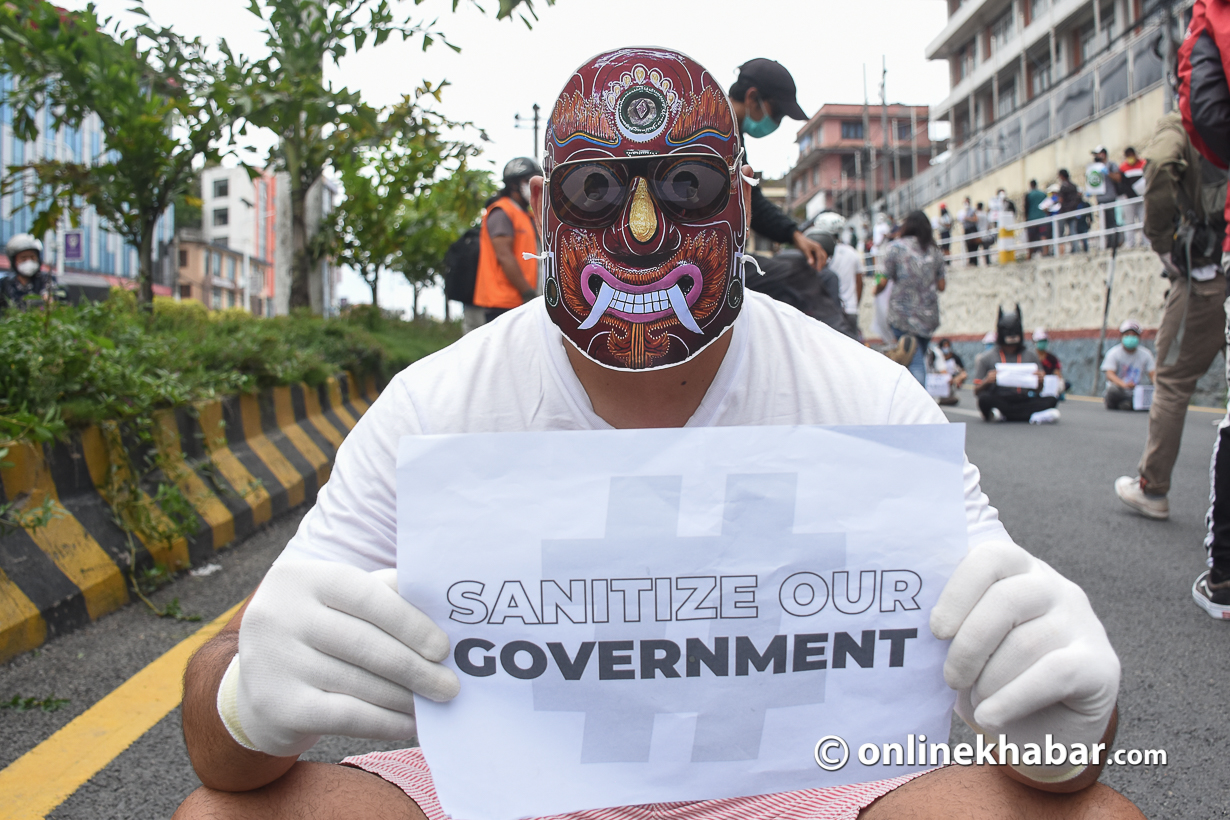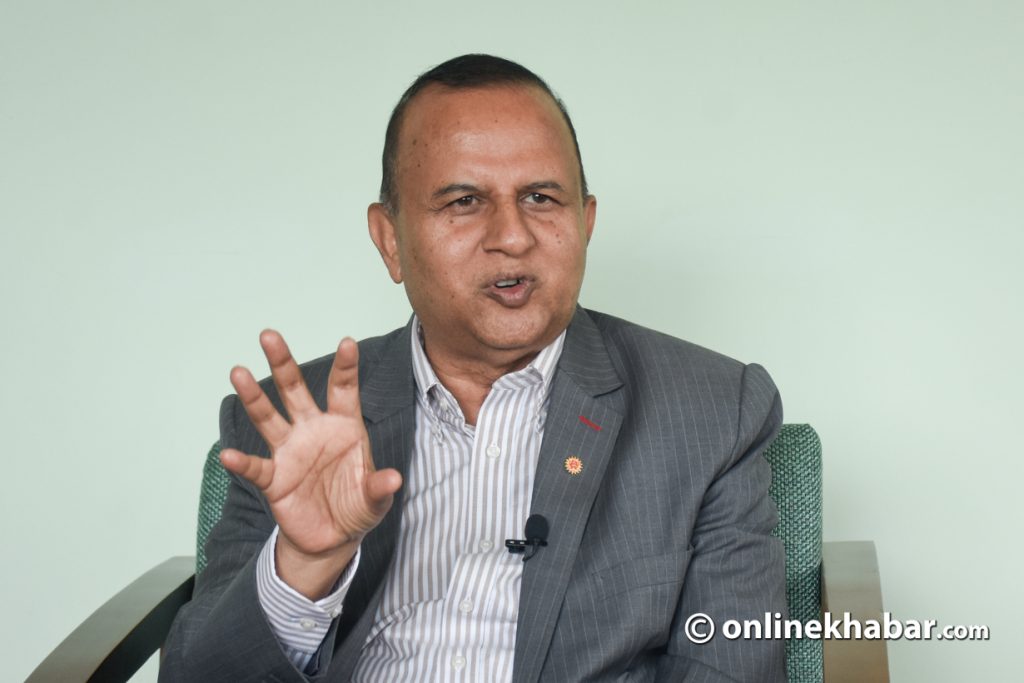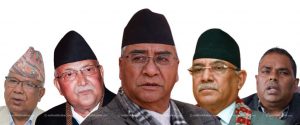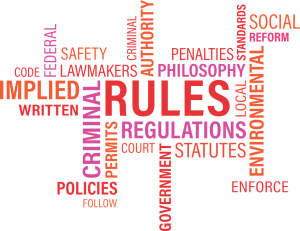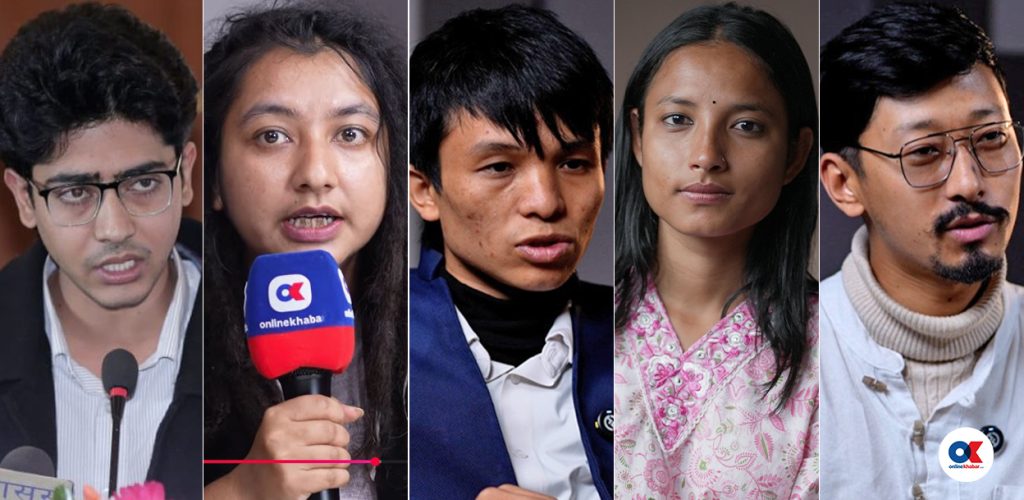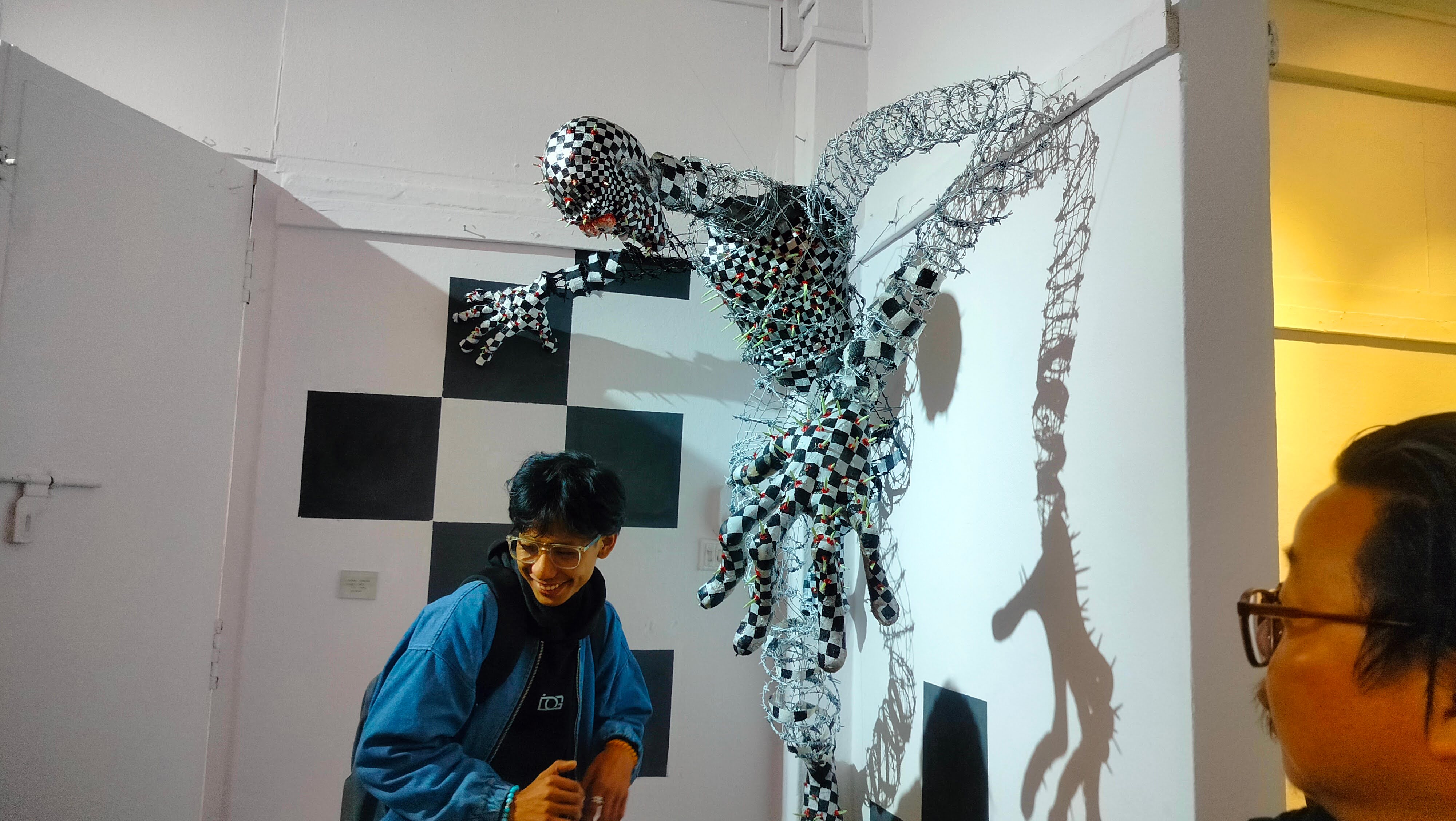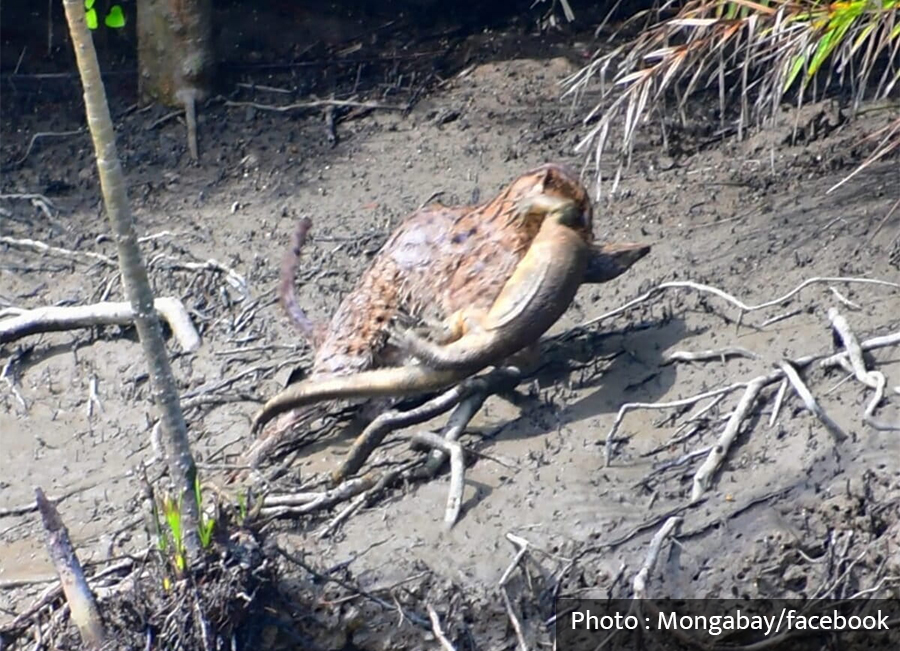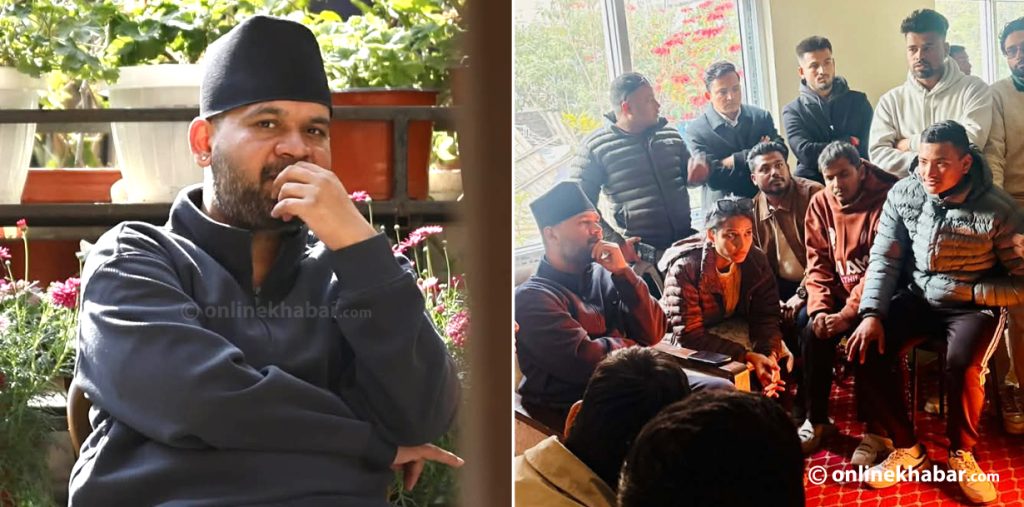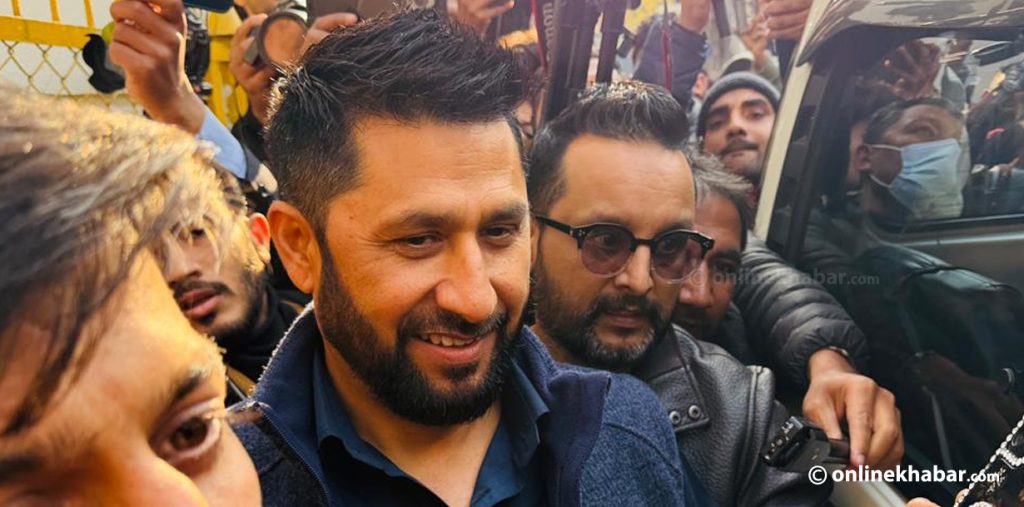Maitighar, Naya Baneshwar, and Ratna Park are widely populous places in Kathmandu. They are also popular destinations for political and civil protests, where traffic obstructions are a common sight these days.
After the recent dissolution of the House of Representatives, protests have been organised here and there. Amid that, many civil rights movements and protests are also ongoing in the capital city. Although many people have resorted to rather silent, creative and non-violent protests, major parties such as the Dahal-Nepal faction of the split Nepal Communist Party are still following the traditional ways of Nepal bandhs and road obstruction as they did last week.
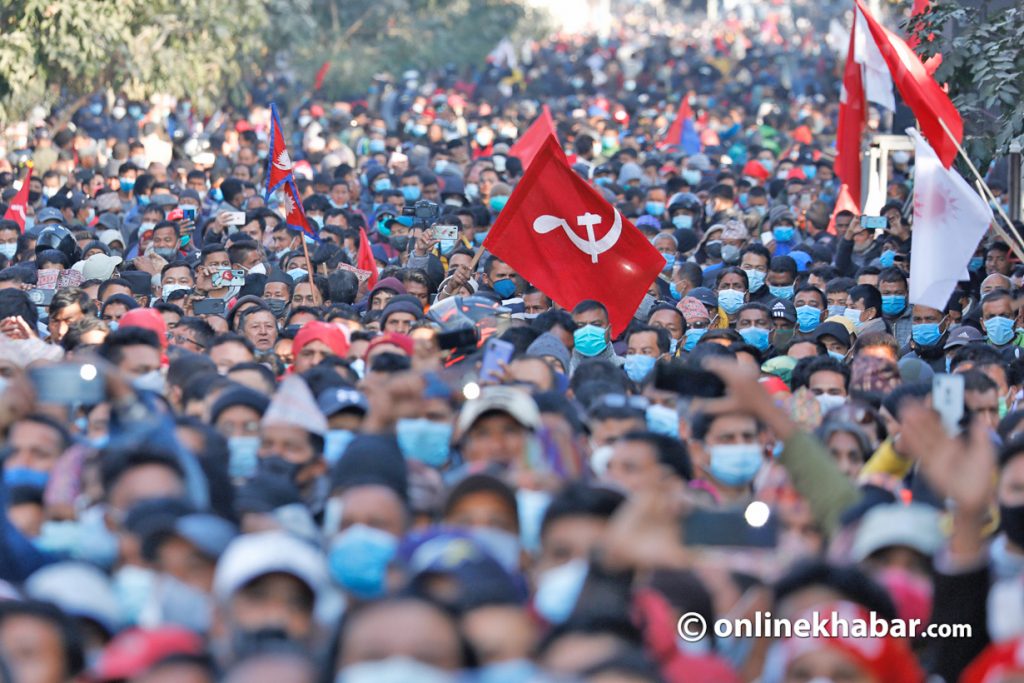
Now, analysts and activists say it is high time Nepalis learned better ways to stage protests and voice their concerns.
Insufficient changes
Over the recent years, the way of protests has somehow changed, says activist and researcher Kailash Rai. “From the number of protests to the number of protestors, it has increased. The solidarity with these protestors has also increased.”

The chairperson of Political Literacy for Women, Prakriti Bhattarai Basnet, who is active in different protest programmes of late, agrees and adds, “If we compare the scenario of 12 years ago or so, yes, the trend has changed.”
But, Basnet adds, “Recently, our leaders showed us that we still have a long way to go. The first few days of the protests by the leaders were peaceful and they should be praised. But, then we saw how they became violent and how they so selfishly organised their masses and let the commoners here suffer. Organising a protest is one’s right but, they should not exploit others’ to walk freely.”
Basnet interprets, “I think the first few days are only a way to give birth to a ‘soft corner’ in people’s mind that they are one among us now. But, they reverted to their ways soon enough.”
She also complains protests of political leades are still the same. Basnet adds the politicians’ demonstrations re still largely about who will be the next prime minister rather than the graver matter of the situation: the prime minister’s unconstitutional move.
She further explains, “Those who come in support of the leaders are still unaware of what they are a part of. I do not blame them as political literacy among people is nil.”
Better ways
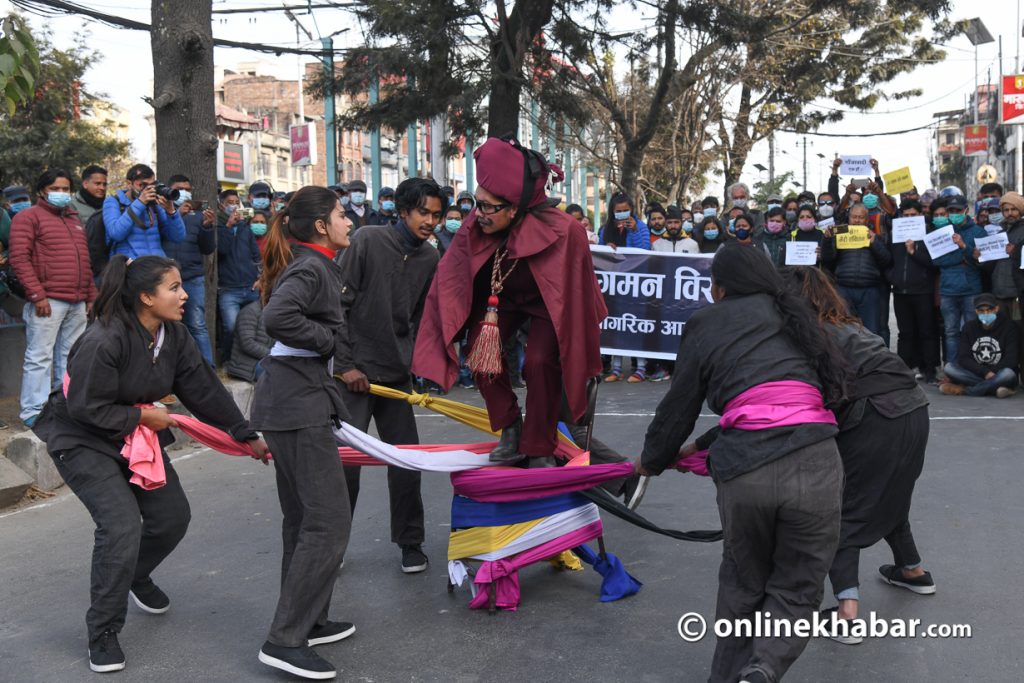
But, these days, you do not feel the need to go violent during protests or even raise your voice to be heard, says Basnet.
“Now you can be silent and be creative. Even a small group of people, like in our protest ‘Balatkari Hoss Ta’ (You are a rapist), can create a loud voice that echoes through everywhere.”
Shilpee Theatre Art Director Ghimire Yubaraj agrees with her. “The artistic way of protest is also not new. Before the 1950s, great writers and poets of Nepal used music, theatre, and poems as a way of protest.”
Other symbolic protests like black bands over their mouth [as of March 16, 1990] is still useful, according to him. “In the protests of 2006 and onwards, we can see that many have now adopted plays or artistic ways as a form of protest, without the need for violence or long speeches slandering anyone.”
Opinions that are included in the protests are also not one-sided anymore, with more inclusiveness in issues and participation, adds Ghimire.
But, this change is limited in Kathmandu only, complains Basnet. “Here, only a certain population that is politically literate and has access to media, to people, and other platforms to voice their opinions are changing their ways.”
Bigger causes for better democracy
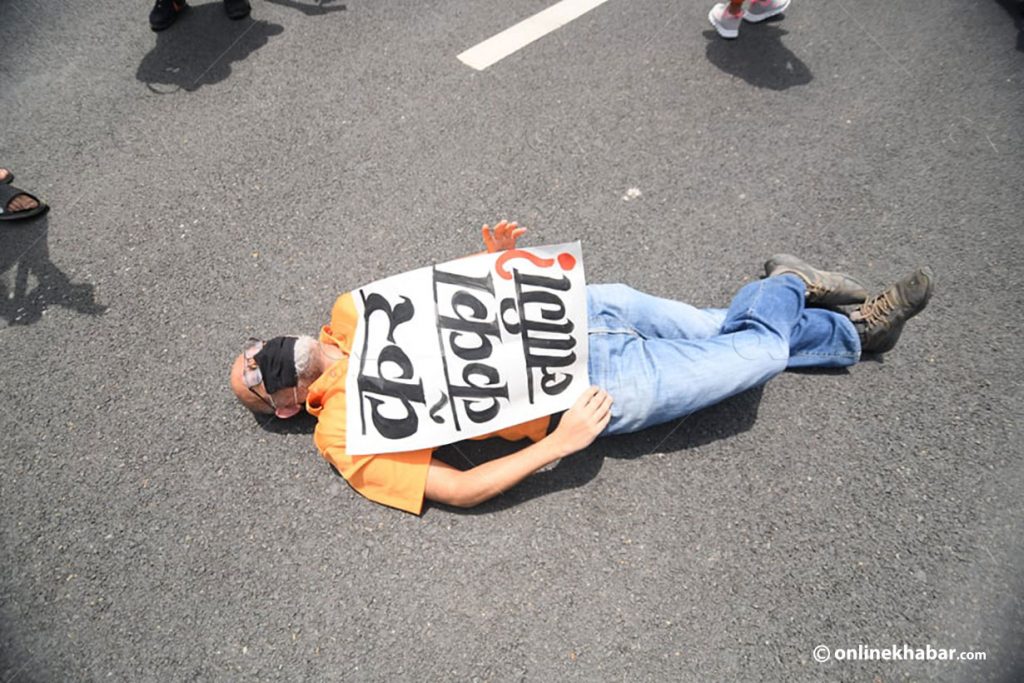
Before 2006, the protests used to be against the state/ autocratic ruler for freedom and against the rules or their amendments that directly impacted the general public. But today, most of the concerns have changed although there are some remnants, according to Ghimire.
Today, the protests are largely a form of democratic practice to ensure good governance in the country. It is a way to voice one’s opinions, their disagreements or disappointments regarding anything, exercising their legal right. More importantly, there is no ‘one enemy’ now.
Rai explains, “Now, it is not just about the change in laws or particular incident, rather other factors are also taken in view and considered sustainably. They even serve as a precedent for future events and protests.”
She defends the protest of common people now is not just about reinstating the House rather about reinstating its impact and implications in democracy as well as the implementation of the constitution.
“People now understand that your voice matters irrespective of the size of the mass you can show in a demonstration. People, if they cannot participate in the mass, can show their solidarity through social media and speaking about the matter from where they are.”
Basnet explains changing forms of protests with the involvement of the general public contribute to improving democracy.
“People are still voting for a party because it is favoured by their families or influential faces and not by understanding their ideologies or their implications in the long run,” she says, “Many still think that democracy is limited to elections, or getting the majority in it. But, everyone should realise democracy is still about us, beyond elections.”
Ghimire complains the same and questions the lack of professors, teachers and other highly influential businesspersons in these protests, who can make a difference in results.



